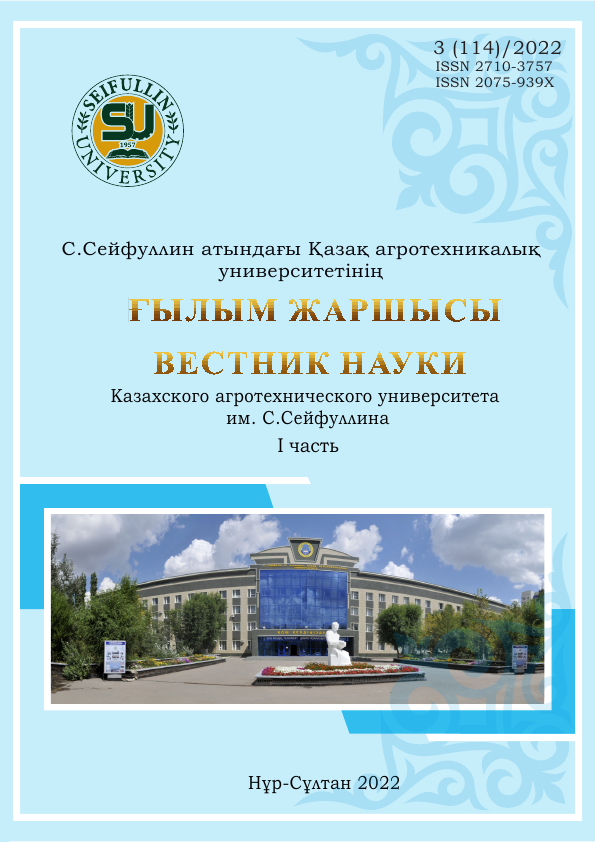FORMATION OF THE PRODUCTION POTENTIAL OF SPRING SOFT WHEAT VARIETIES IN THE DRY STEPPE OF NORTHERN KAZAKHSTAN, DEPENDING ON AGROTECHNICAL METHODS OF CULTIVATION AND WEATHER CONDITIONS
DOI:
https://doi.org/10.51452/kazatu.2022.3(114).1132Keywords:
яровая мягкая пшеница; сорт; агротехника; атмосферные осадки; минеральные удобрения; сроки посева; нормы высева; продолжительность периода вегетации; продуктивностьAbstract
This paper presents studies on the influence of weather conditions and
agrotechnical methods of cultivation – sowing dates, seeding rates, mineral fertilizers
on the productivity of spring wheat varieties – Shortandinskaya 2012, Semenovna,
Karabalykskaya 20. The research was carried out in the steppe zone of Northern
Kazakhstan (LLP "North Kazakhstan Agricultural Company", North Kazakhstan
region, Akkayyn district). The soils of the farm are typical carbonate chernozems.
Sowing of spring soft wheat varieties was carried out according to the steam
predecessor in three sowing periods: May 15; May 20; May 25 with seeding rates –
3.0, 3.5, 4.0 million. germinating seeds per 1 ha . Harvesting was carried out by
mowing the accounting plots with a header to the dump and then threshing the rolls
with the conversion of crop data to standard – 14% humidity and 100% grain purity.
The highest productivity of the studied varieties was noted at the late sowing date –
May 25. In earlier sowing dates – on May 15 and 20, it was slightly lower. A similar
pattern was observed both on a fertilized background and on a background without
mineral fertilizers. An increase in the seeding rate from 3.5 to 4.0 germinating seeds
per 1 ha did not contribute to the growth of their productivity in the studied varieties
of spring soft wheat. The highest productivity, regardless of the timing of sowing and
the background of cultivation, was observed at a seeding rate of 3.0 million.
germinating seeds per 1 ha . As a result of the conducted research, it was found that
the production potential of spring wheat varieties in the conditions of the dry steppe
of Northern Kazakhstan is formed mainly due to precipitation in the middle of the
summer period – late June, early July.
The work was carried out within the framework of the IRN BR10865099-
OT-21 program: "Building a decision-making system for the production of basic
types of agricultural crops based on the adaptation of the DSSAT model for the
growth and development of agricultural crops, an integrated management system for
the production of livestock products based on Smart technologies with the formation
of an information base of scientific and technical documentation on agrotechnologies
for agricultural entities in order to create Smart systems in agriculture"

